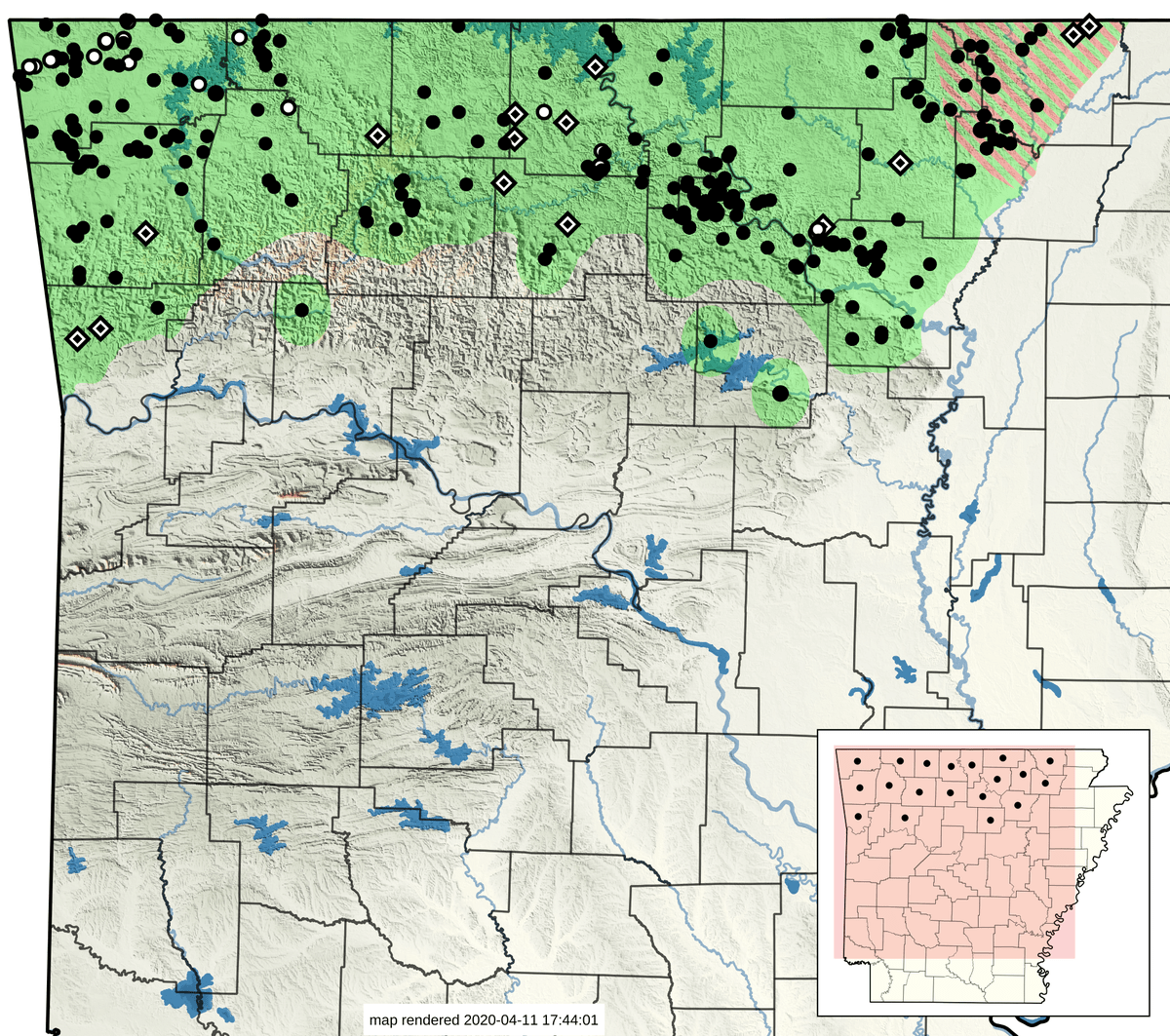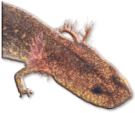Arkansas Herpetological Atlas 2019
This species is represented by 1,691 records from 39 sources: 1,617 museum ( ), 0 literature (
), 0 literature ( ), 0 research (
), 0 research ( ), and 60 observation (
), and 60 observation ( ), with 14 additional Trauth et al. (2004) locality points remaining unsourced (
), with 14 additional Trauth et al. (2004) locality points remaining unsourced ( ). It has been museum vouchered for 19 of 75 counties (
). It has been museum vouchered for 19 of 75 counties ( ). Years of collection range from 1900 to present.
). Years of collection range from 1900 to present.
This species inhabits karst topographies of the Ozark Highlands and northern Boston Mountains. The isolated occurrences from the southern margins of the Boston Mountains are questionable. Trauth et al. (2004) illustrated the purported influence of E. longicauda (■) in northeast Arkansas. Hybridization with E. lucifuga has been detected in genetic studies (R. M. Bonett, pers. comm.).












































